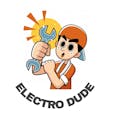Whether you’re testing small electronic circuits, charging batteries, or simply need a portable variable power supply, this little box does it all. It combines a buck-boost converter, a digital volt-ammeter display, and adjustable potentiometers for fine-tuning voltage and current — giving you complete control over your experiments.
With 3D-printed style, modular connectors, and a clean design, this makes your workbench look professional while keeping it totally DIY-friendly. Let’s dive in and build this awesome mini power station! ⚡🔋💪- 3D-Printed Parts: Base and Top Cover (with pre-designed slots)
- 2 × 100k Potentiometers: For voltage and current adjustment
- 1 × Buck-Boost Module: Core power regulation circuit
- 1 × Digital Volt-Ammeter Display: (Remove wires before installation)
- 2 × XT60 Connectors: Male & Female pair for input/output power
- 2 × Banana Sockets (Female): Red (+) and Black (−) output terminals
- 2 × Banana Plugs (Male): Red & Black plugs for test cables
- 2 × Alligator Clips: Red & Black, attachable to male banana plug 1 × On/Off Rocker Switch: Power control for the whole unit
- 🧵 Banana Cable Wires, Jumpers & Small Wires: For internal connections🔩 Nuts & Washers: For mounting connectors and potentiometers
- 🪛 Tools: Screwdriver, small spanner, and pliers
⚠️ Safety First
- Always disconnect the power source before wiring.
- Observe polarity (red = +, black = −).
- Test at low voltage/current first.
- If using a battery, remove it while assembling and only connect for testing when everything is secured.
Follow these simple steps to assemble your digital volt-ammeter regulator inside the 3D-printed case. Each step corresponds to the physical build sequence, from mounting parts to wiring and final testing.
Step 1 — Place the Buck-Boost Module in the BaseTake the 3D-printed base and position the buck-boost converter module in its dedicated slot. Ensure it fits snugly and that the adjustment trimmers/pins are accessible for later calibration.
Remove the nut from the 12V DC female input connector, insert it into its circular slot, and tighten the nut securely.
Push the rocker switch into its rectangular slot until it clicks firmly into place.These will act as your main power input and ON/OFF control.Step 3 — Mount the 12V Female Round Connector & Rocker SwitchRemove the nut from the 12V DC female input connector, insert it into its circular slot, and tighten the nut securely.
- Use red and black banana sockets for positive and negative outputs.
- Disassemble each socket.
- Insert them into the corresponding holes marked “+” and “−” on the base.
- Reassemble and tighten the nuts to fix them firmly.These terminals will connect to your test leads or alligator clips during use
Gently slide the digital volt-ammeter module into its rectangular slot.If wires are pre-soldered, detach them first for easier fitting.Once the display is secured, it will later show live voltage and current readings from the output.
Fit the XT60 female connector into its base slot. This is your main power input connector for batteries or external DC sources.Tighten the nut or clamp so it stays firm during plug/unplug cycles.
Take short red and black wires and solder or crimp them to male banana plugs.Reassemble the plugs and test for tight connections.These will later be used to connect alligator clips or to link other modules for testing.
Now connect all components following the schematic:
XT60 Input → Buck-Boost INBuck-Boost OUT → Volt/Ammeter → Output Banana SocketsPotentiometers → Buck-Boost control pins (Voltage & Current Adjust)
Step 9 — Attach Alligator Clips & Prepare for TestingInsert the male banana plugs into the output sockets.Connect the alligator clips to the free ends (red to red, black to black).These allow quick, safe connections to your test load or circuit under development.
Neatly arrange all wires, ensuring nothing is pinched.Snap or screw the top cover onto the base.Your VARI-BOX is now complete — compact, functional, and ready to deliver regulated power! 🔧✅
📦 Looking for the STL files?Drop me a quick DM and I’ll send you the download link right away! or click here
🧩 No access to a 3D printer?That’s totally fine — you can get your parts made through JUSTWAY, a trusted platform for professional 3D printing.
Justway offer comprehensive metal 3D printing services capable of producing parts in a wide range of metals. From lightweight aluminum to high-strength titanium, our technology supports complex geometries, large-scale builds, and precise functional components.
They offer metal 3D printing capabilities include:Titanium 3D Printing (TC4)
Justway offers high-performance titanium 3D printing using Titanium TC4, a premium alloy renowned for its exceptional strength-to-weight ratio, fatigue resistance, and biocompatibility. This makes it ideal for lightweight, high-strength applications across industries such as aerospace, automotive, and medical manufacturing.
Material OverviewTitanium TC4 (also known as Ti-6Al-4V) combines titanium with aluminum and vanadium to achieve excellent mechanical strength, toughness, and corrosion resistance. The material exhibits a silver-gray metallic luster, resembling steel, but offers significantly lower density and superior resistance to extreme environments. Its low thermal conductivity and high specific strength make it suitable for both structural and functional components.
Material Advantages
- High specific strength and excellent fatigue resistance
- Low thermal conductivity and outstanding corrosion resistance
- Excellent toughness and weldability
- Biocompatible, suitable for medical implants and devices
Process Compatibility
- Technology: Selective Laser Melting (SLM)
- Tolerance: ±200 μm or 0.2%
- Surface Roughness: Ra 3.2–6.3 μm
Justway’s titanium 3D printing capability delivers lightweight, durable, and corrosion-resistant parts that perform reliably under high stress and demanding conditions.
Well Working video Comming Soon stay updated











_t9PF3orMPd.png?auto=compress%2Cformat&w=40&h=40&fit=fillmax&bg=fff&dpr=2)

Comments